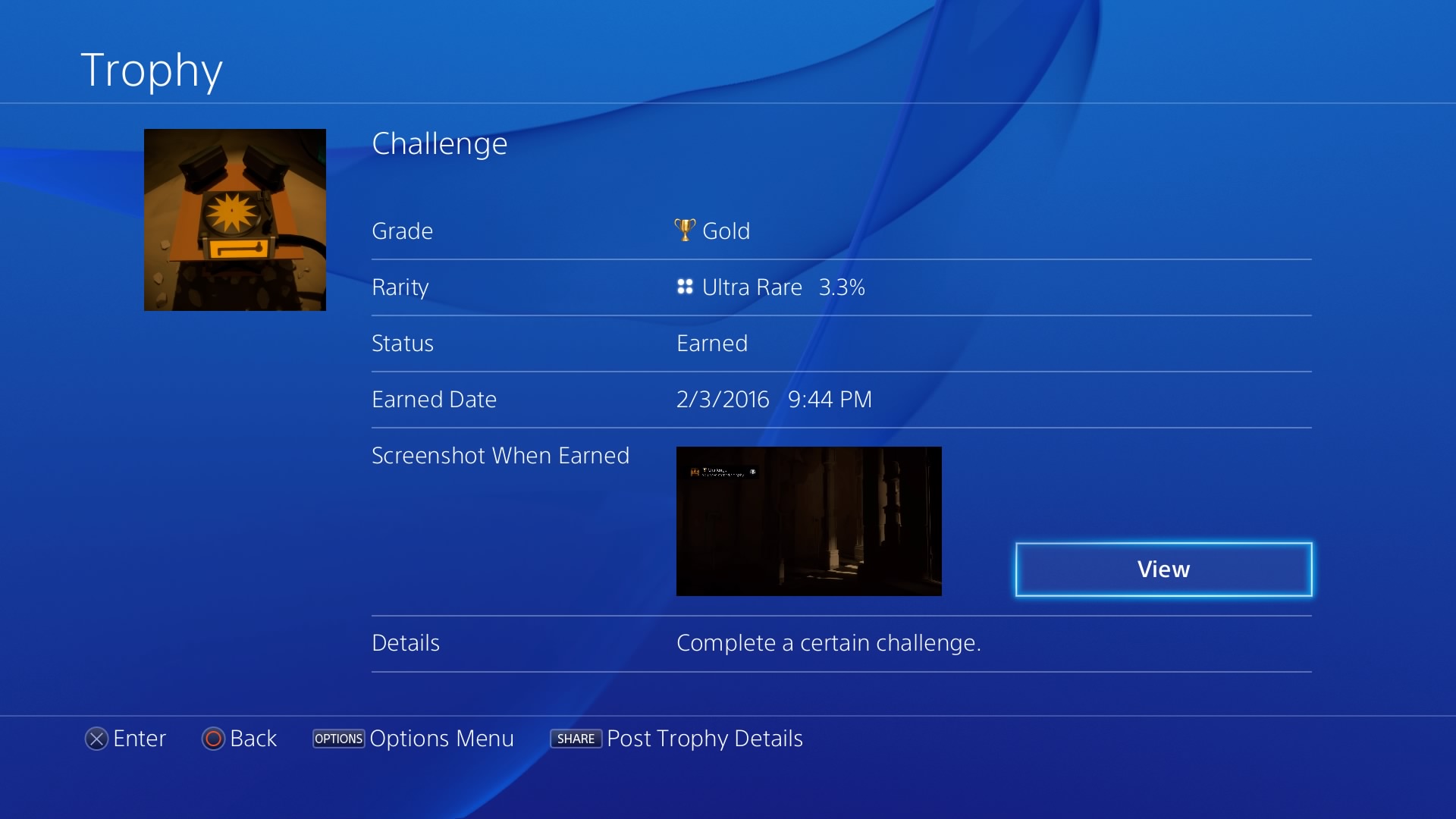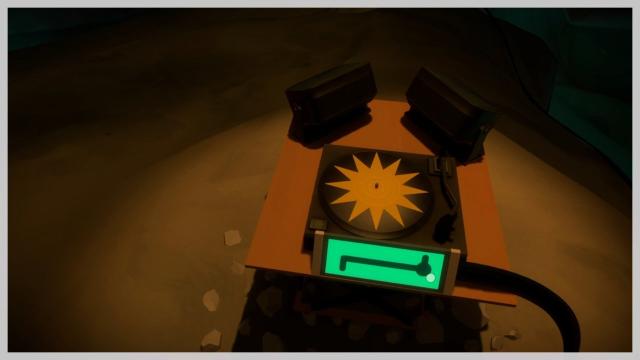“This piece of the game is supposed to be difficult,” the game designer Jonathan Blow recently said to me as we discussed the hardest puzzle in The Witness, the so-called bonus “Challenge” that only 3.3 per cent of PS4 players and 4 per cent of PC players have managed to complete. He was helping me make peace with the fact that I might not be able to clear it either.
Maybe this section just wasn’t for me, I told him over email. Maybe I needed to relax and do other things and come back to it in a week.
I’d written to Blow at the ebb of my enthusiasm for The Witness, the virtual island of puzzles he and his small team at Thekla Inc had crafted over the past several years. I’d already finished 602 of the game’s puzzles, already reviewed the game glowingly, already tried to convince friends to play it, already wondered to myself if it’d be my favourite game of the year.
Then I hit The Challenge, the toughest thing in The Witness and probably the most divisive, too. “Am I the only one that thinks the Challenge is a really bad idea?” someone wrote on Reddit a couple of weeks ago, saying it seemed out of place. After dozens of attempts and five days of failing to clear it, I wasn’t enjoying it much either.
Spoiler warning, in case you didn’t think an article about The Challenge was going to explain what The Challenge is.
The Challenge is an optional sequence of puzzles hidden deep inside the mountain on The Witness’ big island. You can finish the game without finding it, let alone solving it, thank god. It is comprised of 14 line-drawing puzzles that are set up in a series of caves. The puzzles involve rules players learned by playing the rest of the game. For example, on a grid full of coloured squares, the snaking solution line must segregate the colours. If there are black dots on the grid, the line must cover them. Stuff like that.
There are two major twists that make The Challenge a backbreaker. All 14 puzzles are algorithmically generated and are different every time. Even more stressful, the whole thing runs on a timer. You start The Challenge by turning on a record player. The first three puzzles light up for you to solve. Two pieces of classical music play, first Grieg’s Anitra’s Dance and then In The Hall of the Mountain King. You’ve got just under seven minutes, and even getting to the final two puzzles can be a huge accomplishment.
Here’s one of the many videos I captured of me failing at it (by the final two puzzles, I’m just trying to capture footage so I can draw the final two puzzles on paper and practice solving ones of that type):
You can’t cheat at The Challenge. If you pause to catch your breath or sketch a solution to one of the random puzzles in a notebook, the game penalises you. The music fades, and the whole thing resets. Because the puzzles are always different, there are no solutions online.
There is one trick to this thing. One of the first random puzzles in the sequence doubles as a map for the ever-changing labyrinth near The Challenge’s end. Otherwise, you just need to practice. Maybe mute the music, if that helps.
“In general this section is about testing how deeply a player has internalized the rules to the puzzles and how quickly they can react to new configurations,” Blow told me. “I didn’t want to tune this such that players are just expected to be able to beat it if they get here — that is how AAA games are generally tuned, and I don’t like that. Just like a legitimate puzzle is only a puzzle if you might never figure it out, a legitimate challenge is only a challenge if you might never beat it. So yeah, it’s hard.”
Part of what threw me about The Challenge was that, until that point, the game had supported a contemplative approach to staring at and solving its puzzles. I liked that a lot. My tastes have always run more Zelda than Mario, more puzzle-solving than reflex-testing, and so I had been delighted to play a game that was very much the former. Here, in the innermost core of the game, was a mental and physical speed trial. The more I tried it, the more I might have been improving, but after nearly a week of failure, the more I felt baited and switched.
I told Blow that I respected his intentions but that The Challenge reminded me of aspects of game design I disliked: 1) end-game boss battles that are taxing primarily because they rely on the endurance to deal with a long stream of high-stress, pattern-based gameplay and 2) end-game bosses that are tuned so that a player who was able to get through the entirety of the game at a certain pace now has to grind to become good enough to finally pass it.
“I know at least one person who could not beat it even a couple of months ago when it was easier than it is now (the puzzles were less sophisticated),” Blow said to me. “He is a really smart guy and one of the game designers I grew up respecting. This is all OK!”
I was self-conscious about my growing disdain for The Challenge. I’d been ebullient in my review of the game about The Witness‘ implicit suggestion for players to be comfortable with ignorance. The game’s open layout and arrangement of subtle clues seemed designed to encourage players to trust that solutions to problems might present themselves when we stop trying so hard to achieve them. Its Zen messages seemed to advise that attaining knowledge is edifying but that sometimes not finding a solution is OK, too. Just being should be fine. Here I was getting grumpy about not solving a 603rd puzzle.
“Well, yeah, this is the thing,” he replied. “Why do we have this expectation that everybody is supposed to do 100 per cent of the things in a game? That seems like ‘fan service’ of a certain dimension or whatever. And if you design a game with that as a requirement, then you force yourself to hold back on a lot of the things the game actually could do.”
He made an analogy to a novel. “I don’t expect myself to master 100 per cent of Gravity’s Rainbow. In fact the idea of ‘mastering’ a novel is kind of silly. It must not be a very good book if you can do that! So the fact that we have this kind of expectation of games is a sign that the work hasn’t really been that deep, all this time.”
Once while I was playing The Witness last month I was stumped by a puzzle and e-mailed Blow for a hint. Three minutes later, I was e-mailing him to say I’d figured it out. Articulating my conundrum was all that I needed, no hint from him required.
Here at the end of the game, history somehow repeated itself. After five days of trying and failing at The Challenge, I had e-mailed Blow. We had volleyed back and forth, his last reply coming on a Wednesday at 7:20pm. I confessed that I might just give up, but I kept playing. A little more than two hours later, I finally did it. I was ecstatic. What did I shout? “Yes?” “Holy Shit?” I don’t remember, but I probably startled the neighbours.

I took a photo of my screen and sent it to Blow.
His entire reply: “Bingo!”

Comments
11 responses to “Wrestling With The Witness’ Most Difficult, Divisive Puzzle”
I haven’t really liked the Witness, the puzzles have just felt too similar to each other and more like a time investment, you’re bound to solve it at some point…generally within a couple of minutes at worst.
Knowing something like this awaits at the end though…I might just go back and finish the game now.
I hit 40+ attempts on this, but I was determined to do it – finally finishing it was one of the greatest feelings I’ve ever had in games. Man. It was hardcore. I never want to do that again, I hated it so bad, but shit it was so good.
Looking at that screenshot, all I see is “Status: earned.” Fuck yes, that trophy is most definitely earned.
Also, turning off the sound definitely helps. I listened to podcasts instead while I was attempting this. I don’t really think I took that much in from the podcast while I was doing it, but it helped me relax that frustration and hit that zen of just doing it. I imagine the right music might help even more.
I liked the music. Yes, it did make you panic towards the end, but I appreciated that as a piece of fantastic game design.
Oh hell yes it was really good! Very clever design, way better than an arbitrary countdown timer. Plus the displays were super cool.
The only concern I had about the puzzle was that the path and puzzle placement towards the end seemed unfair. I did manage to complete the challenge about half-way through Hall of the Mountain King due to a fortunate layout. However, a colleague pointed out to me after the fact that the layout did indeed reflect the earlier pedestal. Knowing this, I can recognise some of the cues and am a little annoyed at myself for not noticing.
So yeah, I thought the last section was unfair because you had to be lucky at the end. Once I found that there was a pattern, I’m totally cool with it and think it’s entirely fair.
Great game, loved it.
Hey batguy,
Can u help me with this achievement
http://au.ign.com/wikis/the-witness/The_Caves#The_Challenge is your best bet.
The Challenge is definitely true to its namesake, but I managed to best it and now that trophy sits proudly amongst my greatest achievements on Steam.
I saved the clip of beating this thing. The last note of the music had already rung out when I solved the final puzzle. I don’t think I had more than a second to spare. It was amazing.
Has this been confirmed for the xbone at some point?
Please say yes ?